“The bulls have the run of the table here on oil,” said John Kilduff from Again Capital Partners.

“The bulls have the run of the table here on oil,” said John Kilduff from Again Capital Partners.

Global Market Comments
July 22, 2021
Fiat Lux
Featured Trade:
(HOW DID THOSE TECH LEAPS WORK OUT?)
(AAPL), (AMZN), (MSFT)

A month ago, I sent you a research piece about the merits of long-term LEAPS in the major technology stocks (click here for the link).
They included:
Amazon (AMZN) January 2022 $3,200-$3,400 vertical bull call spread
Microsoft (MSFT) January 2022 $240-$270 vertical bull call spread
Apple (AAPL) January 2022 $120-$130 vertical bull call spread
So, how did those work out? Here is the stock performance and the LEAPS performance for each position:
Amazon (AMZN) stock +11.40% LEAPS +26.79%
Microsoft (MSFT) stock +7.69% LEAPS +35.38%
Apple (AAPL) stock +13.38% LEAPS +30.92%
In other words, the LEAPS outperformed the stock to the upside by anywhere from 2.5X to 5X. All three positions are now deep-in-the-money. As long as the stocks close at or above the upper strike prices by the January 16, 20222 option expiration day, they will all produce profits of 100% or more in only seven months!
It goes to confirm the strategy that I have been vociferously arguing in recent months, that LEAPS offer far and away the best risk/reward of any investment in current market conditions. Whenever I have a payday, I pour the money straight into my retirement funds and into the most attractive LEAPS.
The liquidity for long-dated options is not that great. That is why entering limit orders in LEAPS only, as opposed to market orders, is crucial.
These are really for your buy-and-forget investment portfolio, defined benefit plan, 401k, or IRA.
Like all options contracts, LEAPS give its owner the right to exercise the option to buy or sell 100 shares of stock at a set price for a given time.
LEAPS have been around since 1990, and trade on the Chicago Board Options Exchange (CBOE).
To participate, you need an options account with a brokerage house, an easy process that mainly involves acknowledging the risk disclosures that no one ever reads.
If LEAPS expire "out-of-the-money" on expiration day, you can lose all the money you spent on the premium to buy it. There's no toughing it out waiting for a recovery, as with actual shares of stock. Poof, and your money is gone.
Note that a LEAPS owner does not vote proxies or receive dividends because the underlying stock is owned by the seller, or "writer," of the LEAPS contract until the LEAPS owner exercises.
Despite the Wild West image of options, LEAPS are actually ideal for the right type of conservative investor.
They offer vastly more margin and more efficient use of capital than traditional broker margin accounts. And you don’t have to pay the usurious interest rates that margin accounts usually charge.
And for a moderate increase in risk, they present hugely outsized profit opportunities.
For the right investor, they are the ideal instrument.
So, let’s get on with my specific math for the (AMZN) LEAPS to discover its inner beauty.
By now, you should all know what vertical bull call spreads are. If you don’t, then please click this link for my quickie video tutorial (you must be logged in to your account). Warning: I have aged since I made this video.
A month ago, Amazon closed at $3,346.83.
The cautious investor should have bought the (AMZN) January 2022 $3,200-$3,400 vertical bull call debit spread for $102. One contract gets you a $10,000 exposure. This is a bet that (AMZN) shares will close at $3,400 or higher by the January 22, 2022, option expiration, some 1.6% higher.
Sounds like a total no-brainer, doesn’t it?
Here are the specific trades you needed to execute this position:
expiration date: January 21, 2022
Portfolio weighting: 10%
Number of Contracts = 1 contract
Buy 1 January 2022 (AMZN) $3,200 call at………..….……$374.00
Sell short 1 January 2022 (AMZN) $3,400 call at…………$272.00
Net Cost:………………………….………..………….............….....$102.00
Potential Profit: $200.00 - $102.00 = $98.00
(1 X 100 X $98.00) = $9,800 or 96.07% in six months.
In other words, your $10,200 investment turned into $19,800 with an almost sure bet giving you a profit of 96.07%.
Why do a vertical bull call debit spread instead of just buying the January 2022 (AMZN) $3,400 calls outright?
You need a much bigger upside move to make money on this trade. (AMZN) would have to rise all the way to $3,674 to break even on the calls, and all the way up to $3,772 to match the profit of the call spread.
While I think it is possible that (AMZN) could rise that much by January, it is vastly more probable that (AMZN) will be over $3,400 by then. That is what hedge funds do all day long, and that is to find the most probable trade out there and then leverage up like crazy.
Remember, one call option gives you the right to buy 100 shares. That means over $3,400 your call spread that cost $10,200 will enable you to control 100 shares of Amazon worth $340,000. The potential upside leverage over $3,400 is 33.33X!
By paying only $102 for the spread instead of $274.00 for an outright call-only position, you can increase your size by 2.68 times, from 1 to 3 contracts for the same $10,200 commitment. That triples your upside leverage on the most probable move in (AMZN), the one above $3,400. That increases the upside leverage over $3,400 to an impressive 100X compared to the outright call buy.
How could this trade go wrong?
There is only one thing. We get a new variant on Covid-19 that overcomes the existing vaccines and brings a fourth wave in the pandemic.
In this case, (AMZN) doesn’t rise above $3,400 but crashes down to the $1,700 low we saw during the 2020 pandemic. We go back into recession. Both of the above positions go to zero. But if we get a fourth wave, you are going to have much bigger problems than your options positions.
So there it is. You pay your money and take your chances. That's why the potential returns on these simple trades are so incredibly high.
If you are interested in getting a more dedicated LEAPS service from the Mad Hedge Fund Trader, you might consider our Concierge service, which costs $10,000 a year and is by application only. If interested, please email support@madhedgefundtrader.com and put Concierge candidate in the subject line.
Enjoy.
John Thomas
CEO & Publisher
The Diary of a Mad Hedge Fund Trader
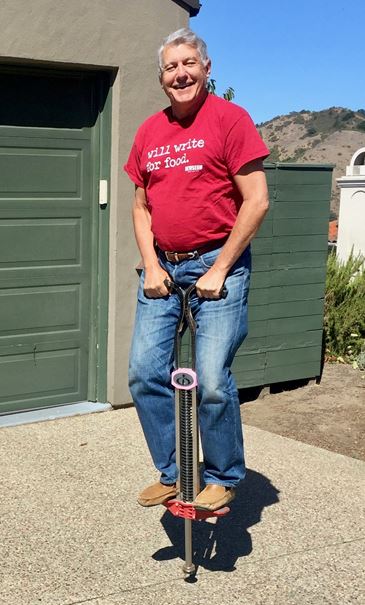
Tech LEAPS are the Way to Go
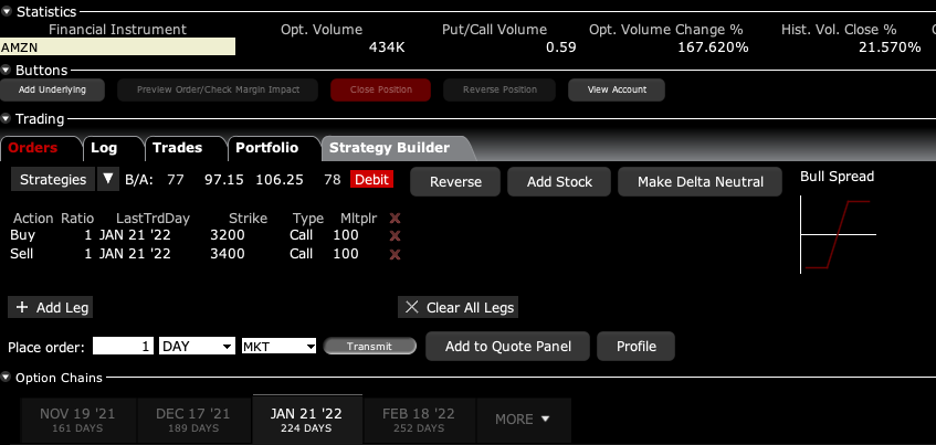
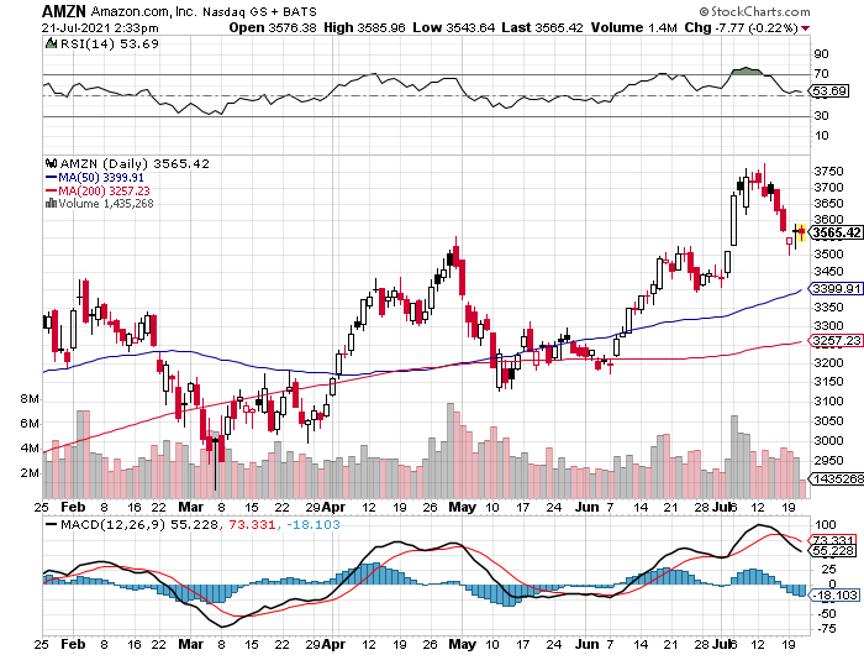
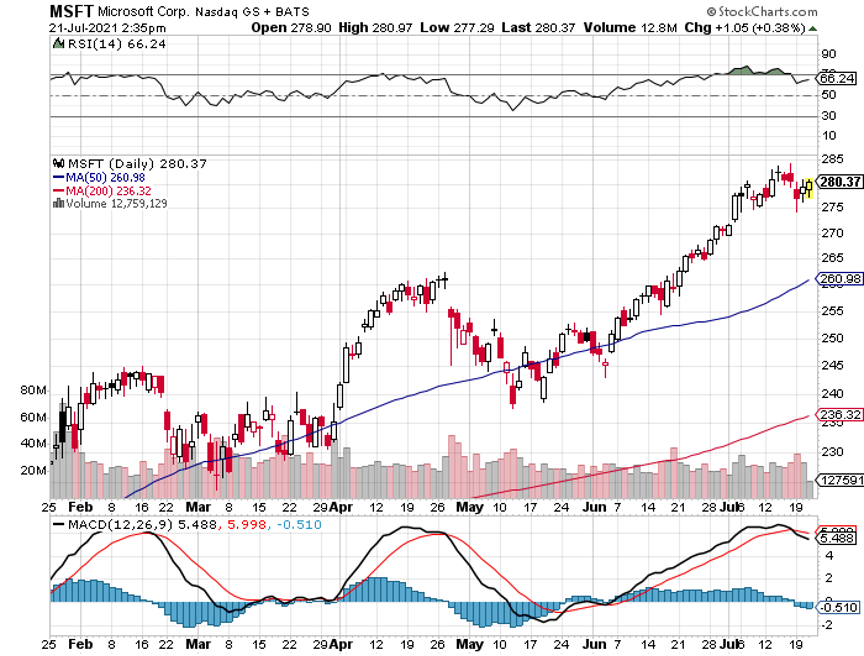
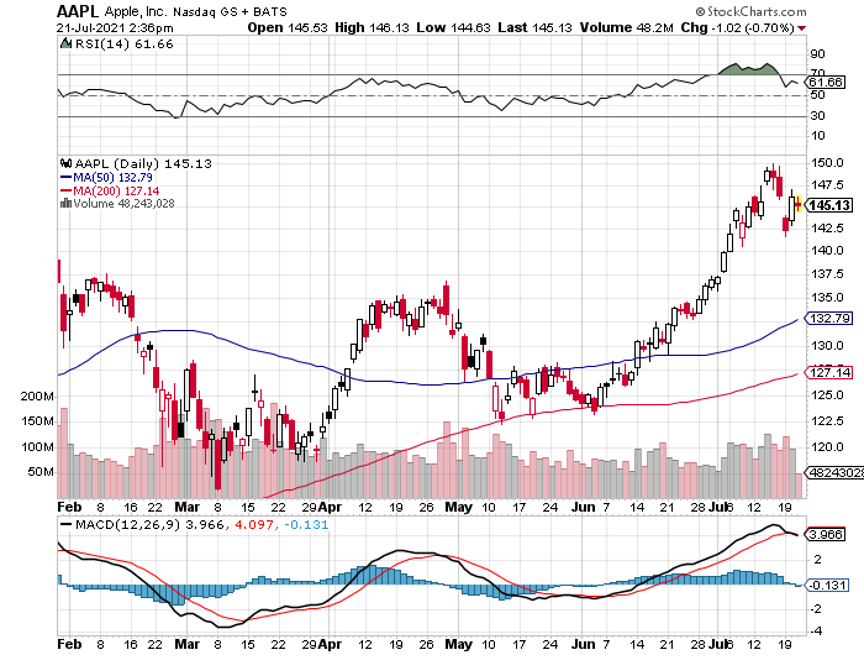
“Language does not provide the means for us to describe the destruction before us,” said Chancellor Angela Merkel about the damage from the climate change-induced flooding in Germany.

Global Market Comments
July 21, 2021
Fiat Lux
Featured Trade:
(AN INSIDER’S GUIDE TO THE NEXT DECADE OF TECH INVESTMENT),
(AMZN), (AAPL), (NFLX), (AMD), (INTC), (TSLA), (GOOG), (FB)

Global Market Comments
July 20, 2021
Fiat Lux
Featured Trade:
(SHOPPING FOR FIRE INSURANCE IN A HURRICANE)
(VIX), (VXX), (XIV)
(THE ABCs OF THE VIX)
(VIX), (VXX), (SVXY)

Global Market Comments
July 19, 2021
Fiat Lux
Featured Trade:
(MARKET OUTLOOK FOR THE WEEK AHEAD, or THE DELTA CORRECTION IS HERE)
(AMZN), (AAPL), (FB), (MSFT), (TAN), (FSLR)

Right now, the fate of your investment portfolio, and indeed your life, is in the hands of a minority of anti vaxers in the Midwest.
If the surge in the delta variant burns out in weeks or a month, the current market correction won’t extend any more than 5% and you should be loading the boat with big tech stocks like (AMZN), (AAPL), (FB), and (MSFT).
The delta variant is becoming a big deal, with unvaccinated states like Arkansas (35% vaccination rate) and Missouri (40% rate) driving the resurgence. It is essentially an epidemic of the unvaccinated.
Unless checked, it could lead to a broader stock market selloff in August. Los Angeles brought back the indoor mask mandate on Saturday, although compliance is near zero. San Francisco may be close behind.
Everyone in my company worldwide is now vaccinated, with Australia last to get one. I’ll be first in line for the Pfizer booster out in the fall. Delta is twice as contagious, more fatal, with more permanent side effects than earlier variants. And it’s killing more kids.
But it’s not the delta you have to worry about. If a future epsilon or zeta variant emerges, that can overcome our current vaccines, bred in the Midwest, the economy would shut down again and you can kiss your bull market goodbye. That would lead to a 1918 style finish to this pandemic, the fatality rate would go up to 50%, and millions more would die.
I’ll stick to the optimistic case….for now.
Even if we get a new variant, we now have the infrastructure in place to sequence the DNA of a new strain in a day and have 100 million doses in the freezer in two months. But it could be a close-run thing.
If you want to stick with your long portfolio in the face of millions dying here is the argument.
The Fed is unable to stimulate the economy any further through interest rate cuts or more QE. It is like pushing on a string. Companies can’t hire the labor they need to increase production or obtain the parts to make things.
This ends in August when workers get their free childcare back in the form of the public school system. The ending of Covid benefits will also light a fire under them. This will lead to a collapse in the unemployment rate and a further rise in GDP from the current ballistic 7.0% rate. This will allow the Fed to raise rates, but not enough to hurt stocks, especially techs.
This is your Goldilocks scenario for H2.
Driving down from Lake Tahoe to Long Beach to pick up my kids from Scout Camp, I passed two huge wildfires. Half the vehicles on the road (US 395) were fire trucks and crews moving in from other states. It’s like being at war.
So, you might ask the question of when will Climate Change affect the stock market? The answer is that Climate Change is actually great for stocks. Money gets spent to put fires out, then trillions of dollars get spent to rebuild with insurance claims.
The biggest impact of climate change is the decarbonization of our energy infrastructure, out of fossil fuels and into alternatives. Solar will soar from 20% to 70% of total electric power output in a decade while nuclear stays at 20% and hydroelectric at 10%. Coal and oil completely disappear. This will enable a large cut in our total energy bill.
Yes, I know oil has rallied lately. I’m sure American Leather had rallied on the way to zero, the only Dow stock to ever completely disappear. It was wiped out by the transition from horses to cars, eliminating 97% of the demand for leather. (The horse population went from 120 million to only 3.8 million today).
There are ways to play this today. Solar growth will be massive, so you have to look at the Invesco Solar ETF (TAN) and First Solar (FSLR).
Here is the next market top, at least for the short term. That’s because, for the last year, stocks have a nasty habit of selling off after quarterly earnings reports, which are just around the corner. Announcement dates for the FANGS are below. For the short term, you want to sell days before the reports. For the long term, you want to keep them, as I expect all to double or more in the next three years.
Facebook (FB) is July 28, 2021
Alphabet (GOOGL) - Jul 25, 2021
Apple (AAPL) Jul 27, 2021
Amazon (AMZN) Jul 26, 2021
Netflix (NFLX) Jul 20, 2021
Microsoft (MSFT) - Jul 28, 2021
China’s economy is slowing, with the post-Covid bounce over. It just provided $154 billion in stimulus for its economy and cut bank reserve requirements by 50 basis points. If they slow there, we could slow here, especially for big exporters to China in the ags.
Core CPI jumps to 5.4%, the biggest gain in 13 years. Excluding food and energy, it’s the biggest print since 1991. The Fed is holding its breath that these large numbers are temporary. Used car and truck prices accounted for a third of the gain for the second month in a row. That is certainly not sustainable, or I’m going into the used car business. Tech took off like a rocket on the news.
Producer prices show biggest gain since 2008, the is index up a hot 1.0% in June against 0.8% in May. PPI is up 7.3% YOY. Higher commodity and labor costs against shrinking inventories were the big issues. Inflationary pressures are here, but for how long?
Senate agrees to $3.5 trillion spending plan, providing great news for stocks and terrible news for bonds. No Republican support is required. This is in addition to the $579 billion infrastructure deal reach with opposition support. It’s enough dosh to keep this stock market percolating for years. Buy FANGS on dips.
Any tightening is a ways off, says Fed governor Jerome Powell in his congressional testimony, sending bonds soaring. The comment was in response to the superheated 5.4% CPI print on Tuesday. The $120 billion a month in Fed bond buying continues. Big tech loved it and continued with its non-stop rally. The rocket fuel for share prices continues unabated.
The four biggest US banks deliver spectacular earnings, posting a combined $33 billion in profits, triggering the predictable selloff. That is $9 billion above analyst forecasts, which seem to be a permanent lagging indicator. Consumer spending is exceeding pre-pandemic levels, credit quality is soaring, and credit card spending is through the roof. Buy (JPM), (BAC), and (V) on dips.
US retail sales come rocketing back, with customers spending those stimulus checks hand over fist. The 0.6% gain in June came on the heels of a 1.7% drop in May. Vaccinations are driving buyers back into the stores. Electronics stores, clothing, and restaurants saw the biggest increases.
Bank of America lowers US GDP from 7.0% to 6.5%, still the whitest hot numbers in history. 2022 is looking like 5.5%, still double the pre-pandemic rate. Personally, I think these numbers are low, and the stock market thinks so too. Keep buying dips in the good names.
Investors pouring out of bonds and into stocks, according to a survey of mutual fund flows last week. I couldn’t agree more. The Fed can’t keep holding on to zero rates forever, and when their turn comes, its will be brutal.
My Ten Year View
When we come out the other side of pandemic, we will be perfectly poised to launch into my new American Golden Age, or the next Roaring Twenties. With interest rates still at zero, oil cheap, there will be no reason not to. The Dow Average will rise by 800% to 240,000 or more in the coming decade. The American coming out the other side of the pandemic will be far more efficient and profitable than the old. Dow 240,000 here we come!
My Mad Hedge Global Trading Dispatch profit reached a 1.84% gain so far in July. My 2021 year-to-date performance appreciated to 70.44%. The Dow Average is up 13.35% so far in 2021.
I spent the week running my two last positions, a long in (JPM) and a short in the (TLT) into the July 16 options expiration. Both expired at max profit. I then immediately strapped on a new short in the (SPY), my first since the pandemic began. That leaves me 90% in cash. I’m keeping positions small as long as we are at extreme overbought conditions.
That brings my 11-year total return to 492.99%, some 2.00 times the S&P 500 (SPX) over the same period. My 12-year average annualized return now stands at an unbelievable 42.56%, easily the highest in the industry.
My trailing one-year return exploded to positively eye-popping 108.94%. I truly have to pinch myself when I see numbers like this. I bet many of you are making the biggest money of your long lives.
We need to keep an eye on the number of US Coronavirus cases at 34.1 million and deaths topping 609,000, which you can find here.
The coming week will be a weak one on the data front.
On Monday, July 19 at 11:00 AM, the NAHB Housing Market Index for July is out. Johnson & Johnson (JNJ) and Verizon (VZ) report.
On Tuesday, July 20, at 8:30 AM, Housing Starts for June are printed. Haliburton (HAL) and United Airlines (UAL) report.
On Wednesday, July 21 at 11:30 AM, EIA Crude Oil Stocks are announced. Netgear (NTGR) reports.
On Thursday, July 22 at 8:30 AM, we learn the latest Weekly Jobless Claims. At 11:00 AM, we get Existing Home Sales for June. American Airlines (AAL) and Biogen (BIIB) report.
On Friday, July 23 at 2:00 PM, we learn the Baker-Hughes Rig Count. American Express (AXP) reports.
As for me, we all had to rearrange our budgets in the last year, dumping old spending habits and adopting new ones.
As for me, my electric scooter bill with Lime (click here for the site) has gone through the roof. They neatly fill the gap between walking and Uber in major tourist areas like Long Beach.
It’s a lot of fun, provided you don’t kill yourself on your first ride. The scooters go fast, some 20 miles an hour. Each one has a 13-mile range. When you’re done, you just drop it, take its picture, and then Lime picks it up and recharges it overnight.
I think I broke all seven of their mandatory rules (no driving on sidewalks, driving without a helmet, drinking while driving….). Hey, the great thing about being my age is that there are no long-term consequences to anything.
Stay healthy.
John Thomas
CEO & Publisher
The Diary of a Mad Hedge Fund Trader

Check Out My New Wheels
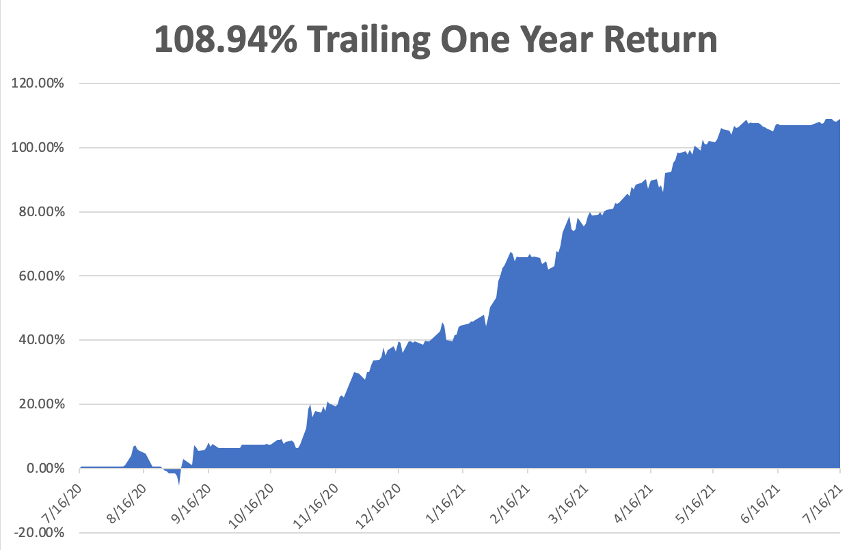
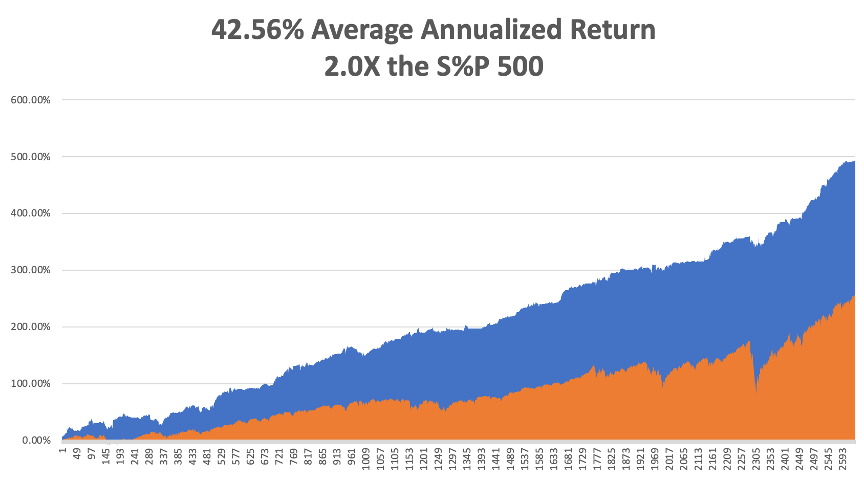
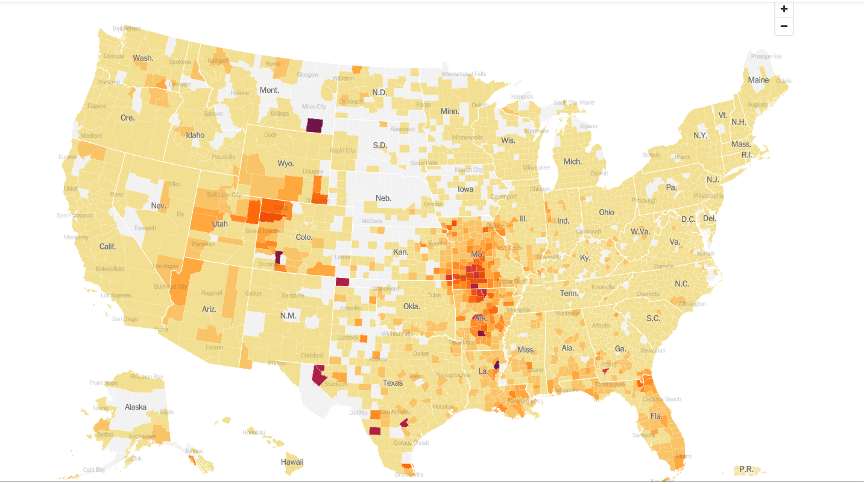
Here is the Problem
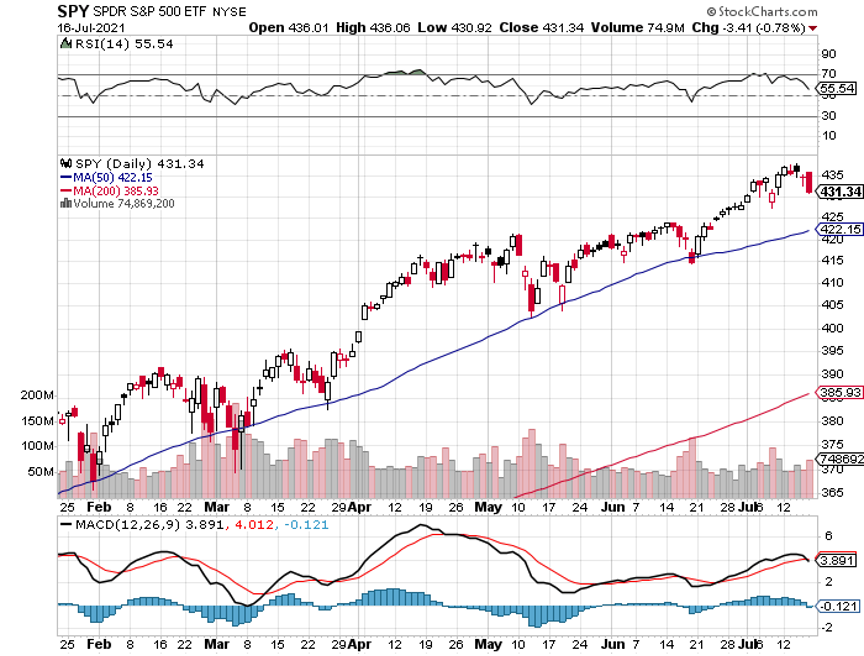
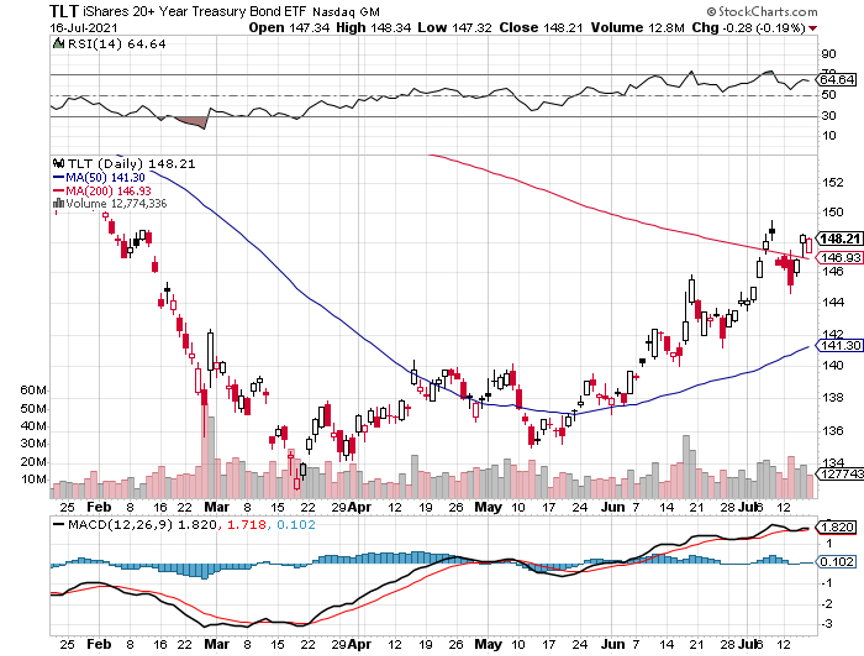
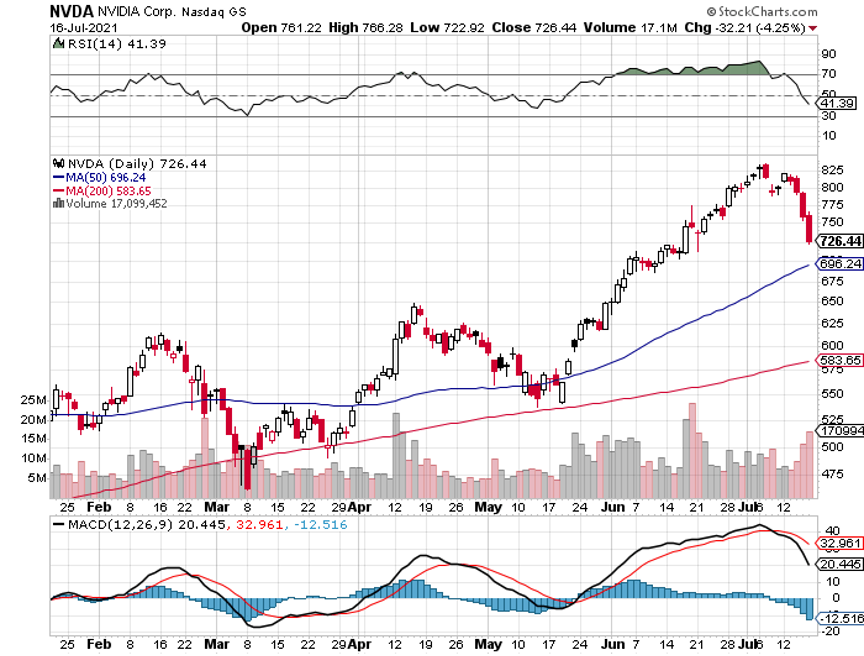
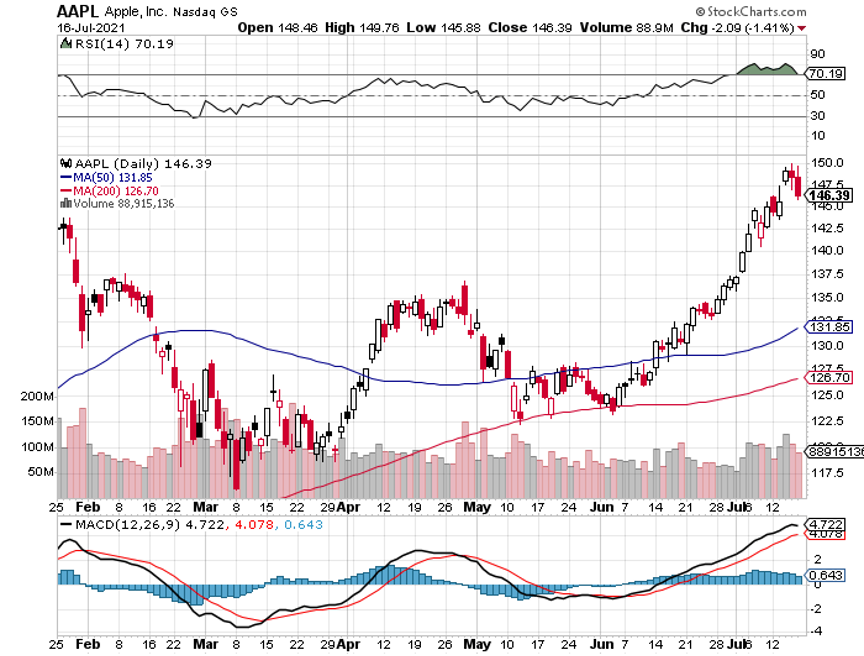
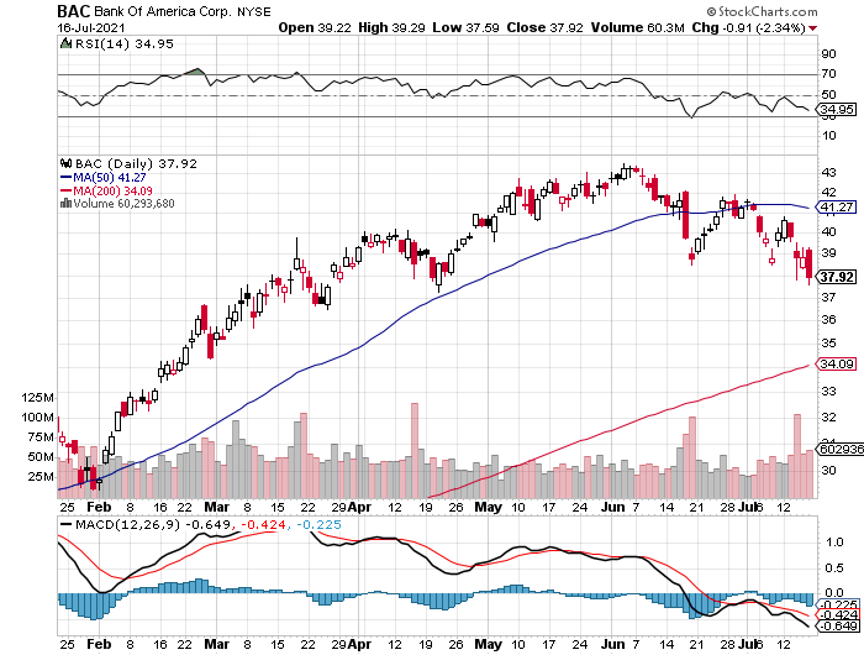
Global Market Comments
July 16, 2021
Fiat Lux
Featured Trade:
(JULY 14 BIWEEKLY STRATEGY WEBINAR Q&A),
(JPM), (MS), (GS), (TLT), (TBT), (CRSP), (AAPL), (TSLA), (QS), (SPCE), (AMZN),
(FCX), (FEYE), (PANW), (HACK)

Below please find subscribers’ Q&A for the July 14 Mad Hedge Fund Trader Global Strategy Webinar broadcast from Lake Tahoe, NV.
Q: Which banks are best?
A: JP Morgan (JPM), Morgan Stanley (MS), and Goldman Sachs (GS). That's the trifecta. If you look at the charts, the brokers Morgan Stanley and Goldman Sachs are overwhelmingly outperforming everyone else. They will continue to do that, as the bull market in stocks is a money machine for them.
Q: What has caused interest rates to continue to drop so much in the last 1-2 months? Why are you confident you will see them rise from here on?
A: The reason they've dropped so much is there is a bond shortage (TLT). There is more demand for bonds and reach for yield around the world than the US government is able to supply. Therefore, the US government should do more borrowing and issue more bonds. That's what the market is telling them to do. When your 10-year yield goes to 1.2%, the message is that you're not borrowing enough, not that you're borrowing too much. How does this end? Eventually, the sheer volume of bond issuance will reach global demand. And we will also see some inflation, not much but some, and that will be enough to take us back up to the 1.75% yield that we had in March. I think we will see that by the end of the year, especially if the Fed tapers and cuts back at least the mortgage bond purchases, which is $40 billion/month. Why subsidize housing when there are nationwide bidding wars?
Q: Are you positive on CRISPR Technologies (CRSP)?
A: Yes, but it is a long-term play and I recommend the LEAPS on those that go out to 2023. That said, we did just have a big rally up to the 140s from the 100s so that 40% was pretty good. But that's the way these small biotech’s trade you get long periods of no movement and then sudden explosive moves to the upside when they make a breakthrough.
Q: Are we going to see inflation?
A: We will have some inflation; but the major component of inflation now is used cars and rental cars, which are up 100% year on year, and that is totally unsustainable. That means a year from now, increase in used car prices will be zero, and will actually be a big drag on inflation. So that's what the Fed means when they say that any inflation will be temporary as we go through these tremendous YOY comparisons when demand goes from zero to near infinite. And that's happening in many sectors of the economy right now. You never get rich betting against a 40-year trend, and for inflation that is down.
Q: Has the market peaked for the short term?
A: My bet on a short-term peak is the last week of July when all the big tech companies report. And then we classically get reasonable selloffs after that—buy the rumor, sell the news. That's our next entry point for long positions in this market. Since the presidential election, the index has been unable to drop more than 4.8% as there is so much money on the sidelines trying to get in.
Q: Should I be max long ProShares Ultra Short Treasury Bond Fund (TBT) LEAPS?
A: Just make sure they’re long-dated LEAPS—at least six months to a year or longer. That way you have plenty of time for them to work. The current return on the (TBT) June 2022 $17-$19 vertical bull call LEAPS at $0.75 is 166%.
Q: What’s the chance of Biden’s budget passing?
A: 100%. It’s just a question of how much will be in there—we’re at $597 billion on infrastructure and $3.5 trillion for the rest of spending. That gives you a $4.1 trillion budget for the next fiscal year starting October 30, which is the biggest in history and biggest since WWII on an inflation-adjusted basis. That will go through and keep the stock market percolating for several more years. Dow $240,000 here we come!
Q: Would you sell calls against Apple (AAPL) today?
A: I would, I would do something like the August $165’s. Even then, it’s a high-risk trade because Apple has been on such a parabolic move for the last 2 months. So do that at your own risk; notice I’m not putting out trade alerts telling you to short Apple in any way shape or form. My target for the yearend is $200.
Q: Will Tesla (TSLA) use QuantumScape (QS) batteries to make their own solid-state ones?
A: Tesla will make their own solid-state batteries They are far ahead of QuantumScape with their own technology and eventually, they will wipe them out. So, I am not recommending QuantumScape—they are 10 years behind Tesla. Sorry, I didn’t make that clearer in my research piece.
Q: When do you expect the 7% drop in the market?
A: August/September is usually when the market bottoms. Let’s see if we get it this time. Predicting down moves has been somewhat of a fool's errand in a market when you have infinite QE, infinite fiscal stimulus, infinite monetary stimulus, and the highest economic growth in history. And again, I am upgrading my 10-year forecast for the market; I’m not looking for a Dow 120,000 by 2030 anymore, I’m looking for a Dow 240,000, and when you’re still at only a measly 34,933, you don’t get many 7% drops. In fact, we’ve had none since the election.
Q: Could Tesla make an all-time high by the end of the year?
A: Yes, especially if they make progress on the solid-state batteries. Tesla (TSLA) tends to have sideways periods that can last years and then explosive moves to the upside. It almost trades like a biotech stock.
Q: Is Virgin Galactic (SPCE) a buy here off the back of their successful rocket launch last week?
A: No, any business dependent on retail sales of tickets at $250,000 each has absolutely no chance of ever making a profit in its life. As much as I like Richard Branson, who I used to fly with, the fact is that this business will never make money. It's more of a public relations vehicle for all of the hundreds of Virgin Brands. They’ll never get the cost low enough to make this economic for the average person. Spaceships aren’t cheap, and they don’t sell them at Costco. In fact, you notice that after the rocket launch, the stock dropped 20%. However, if they do drop the price to $100,000 even I might buy a ticket but only if they let me fly the thing.
Q: What is your favorite FANG stock other than Apple?
A: It is Amazon (AMZN). I think it hits $5,000 by the end of the year. If they try to break it up it’ll be worth $10,000, which it will get to eventually (in like 5 years) anyway. They just have absolutely everything working there.
Q: Why is Alaska the worst state to do business in?
A: Well, first of all, it’s only habitable for like 6 months of the year, and otherwise it’s too cold and heating bills are enormous. Also, nothing is produced in Alaska besides tourism and oil, which is subject to enormous volatility. They actually canceled the oil payouts for Alaskan citizens last year. Anything else you want to do in Alaska requires transportation costs from the US. So essentially there are 49 other better states to bring business ideas to.
Q: Will Amazon ever split their stock?
A: No, there's no reason or net benefit to it. Jeff Bezos has never been prone to financial engineering because he never needed to. Natural earnings growth was always so enormous he didn’t need to bother with any of these side games to jack the stock price. So, I would say “no” on a stock split.
Q: In a two-year LEAPS, you’re taking a long position, yes?
A: When you do a LEAPS spread, you're buying a 1-2 year call and you’re selling short a 1-2 year call against it. That cuts your price by ⅔ and increases your leverage by a factor of 3 and is a far greater risk/reward than just buying the 2-year call outright. If you want to learn more about LEAPS, send us an email about the Mad Hedge Concierge Service that is by application only.
Q: When is the recording up?
A: About two hours.
Q: Do you still love Freeport McMoRan (FCX)?
A: Yes, it’s taking the inflation vacation right now with the rest of the commodities, but I expect it to come roaring back by the end of the year. Electric vehicles need 200 pounds of copper compared to only 20 pounds for internal combustion cars.
Q: Thoughts on FireEye (FEYE)?
A: Yes, we love FireEye along with the rest of the cybersecurity plays, so buy on the dips. Hacking is a growth market and will never go out of fashion. BUY (PANW) and (HACK) on dips.
To watch a replay of this webinar with all the charts, bells, whistles, and classic rock music, just log in to www.madhedgefundtrader.com, go to MY ACCOUNT, click on GLOBAL TRADING DISPATCH or TECHNOLOGY LETTER, then WEBINARS, and all the webinars from the last ten years are there in all their glory.
Good Luck and Stay Healthy.
John Thomas
CEO & Publisher
The Diary of a Mad Hedge Fund Trader

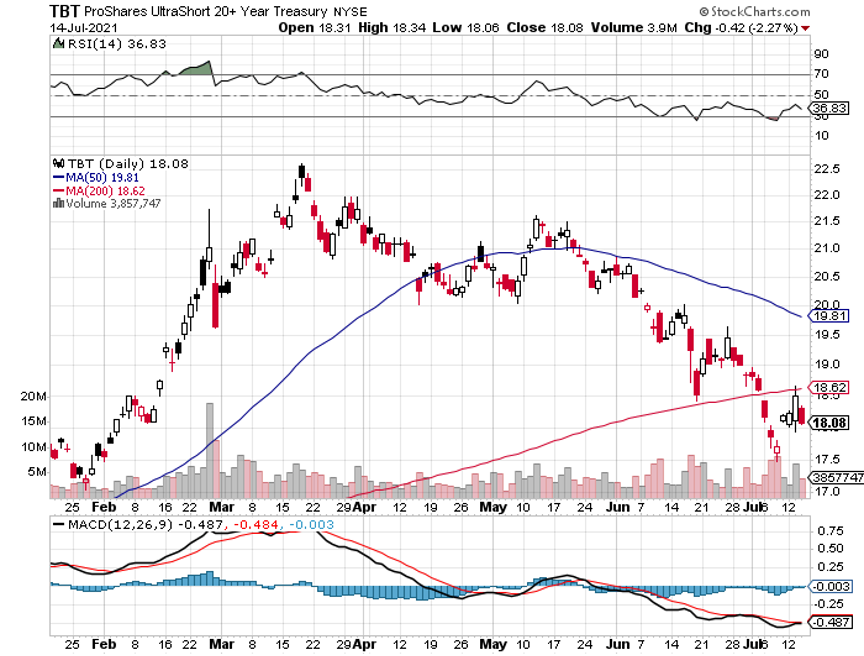
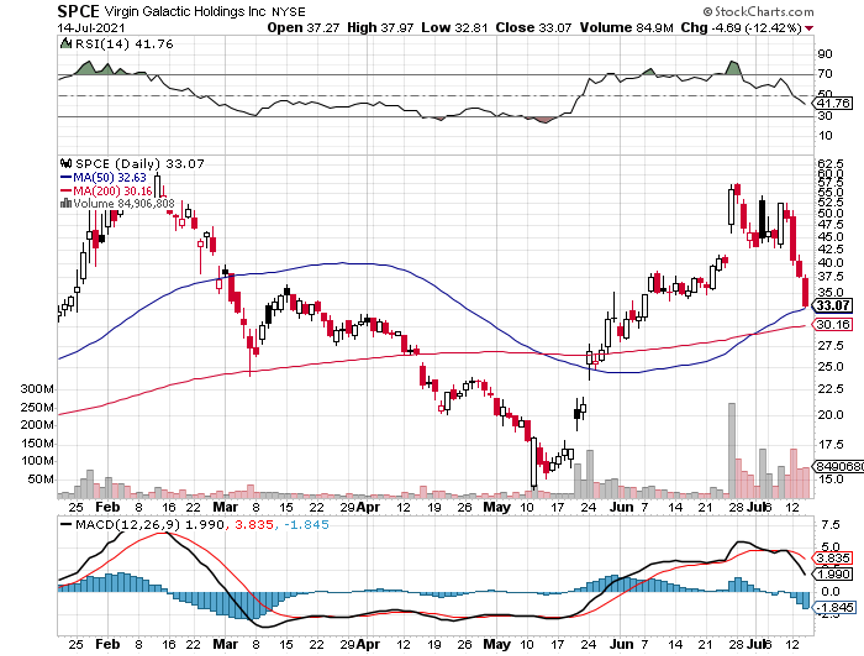
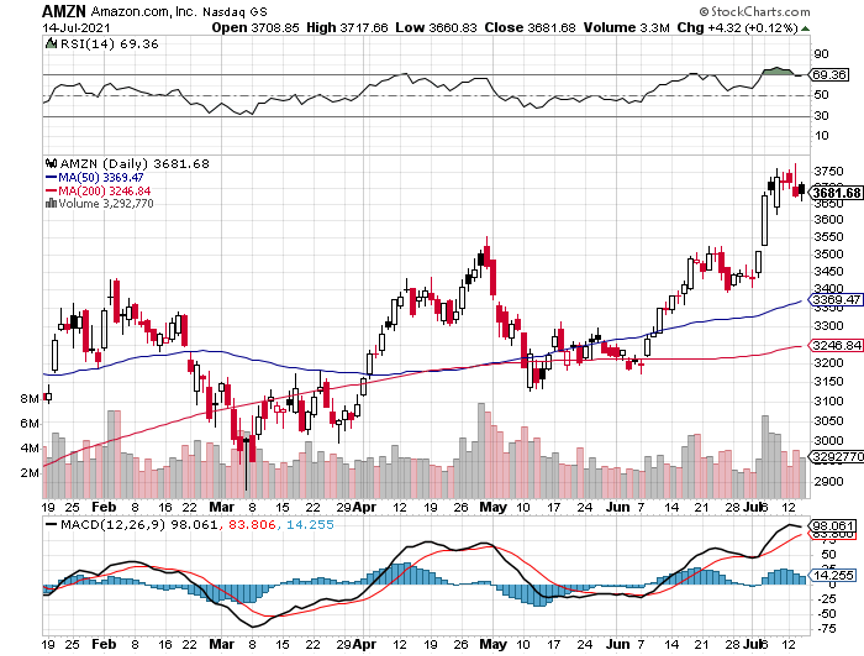
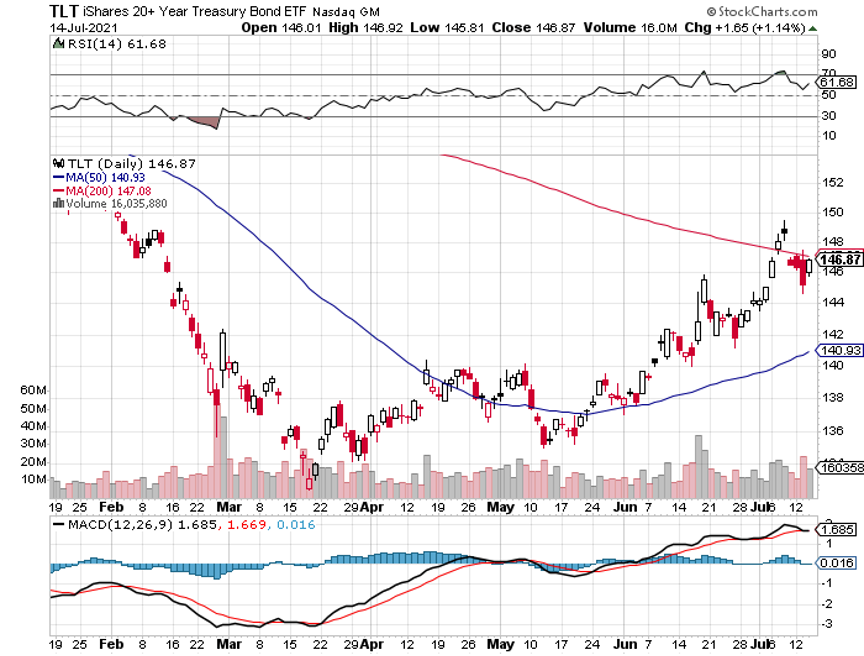
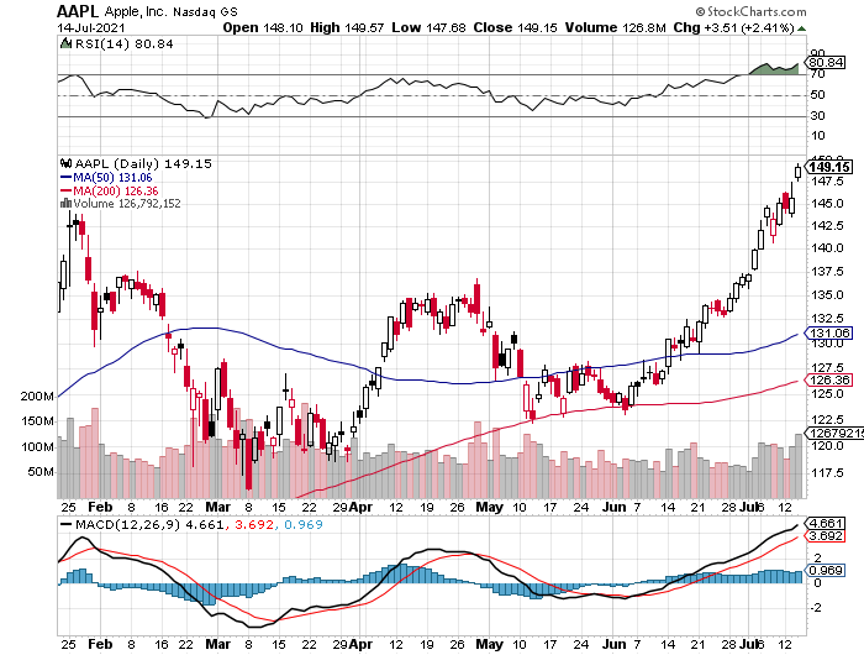
Legal Disclaimer
There is a very high degree of risk involved in trading. Past results are not indicative of future returns. MadHedgeFundTrader.com and all individuals affiliated with this site assume no responsibilities for your trading and investment results. The indicators, strategies, columns, articles and all other features are for educational purposes only and should not be construed as investment advice. Information for futures trading observations are obtained from sources believed to be reliable, but we do not warrant its completeness or accuracy, or warrant any results from the use of the information. Your use of the trading observations is entirely at your own risk and it is your sole responsibility to evaluate the accuracy, completeness and usefulness of the information. You must assess the risk of any trade with your broker and make your own independent decisions regarding any securities mentioned herein. Affiliates of MadHedgeFundTrader.com may have a position or effect transactions in the securities described herein (or options thereon) and/or otherwise employ trading strategies that may be consistent or inconsistent with the provided strategies.
This site uses cookies. By continuing to browse the site, you are agreeing to our use of cookies.
OKLearn moreWe may request cookies to be set on your device. We use cookies to let us know when you visit our websites, how you interact with us, to enrich your user experience, and to customize your relationship with our website.
Click on the different category headings to find out more. You can also change some of your preferences. Note that blocking some types of cookies may impact your experience on our websites and the services we are able to offer.
These cookies are strictly necessary to provide you with services available through our website and to use some of its features.
Because these cookies are strictly necessary to deliver the website, refuseing them will have impact how our site functions. You always can block or delete cookies by changing your browser settings and force blocking all cookies on this website. But this will always prompt you to accept/refuse cookies when revisiting our site.
We fully respect if you want to refuse cookies but to avoid asking you again and again kindly allow us to store a cookie for that. You are free to opt out any time or opt in for other cookies to get a better experience. If you refuse cookies we will remove all set cookies in our domain.
We provide you with a list of stored cookies on your computer in our domain so you can check what we stored. Due to security reasons we are not able to show or modify cookies from other domains. You can check these in your browser security settings.
These cookies collect information that is used either in aggregate form to help us understand how our website is being used or how effective our marketing campaigns are, or to help us customize our website and application for you in order to enhance your experience.
If you do not want that we track your visist to our site you can disable tracking in your browser here:
We also use different external services like Google Webfonts, Google Maps, and external Video providers. Since these providers may collect personal data like your IP address we allow you to block them here. Please be aware that this might heavily reduce the functionality and appearance of our site. Changes will take effect once you reload the page.
Google Webfont Settings:
Google Map Settings:
Vimeo and Youtube video embeds:
